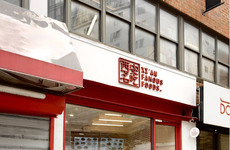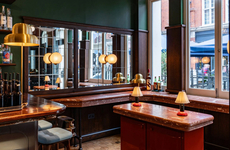
Linehouse's Hong Kong Dim Sum Restaurant is Design-Forward
Kalin Ned — November 19, 2018 — Art & Design
References: linehousedesign & dezeen
This Hong Kong dim sum restaurant is a must visit, partly because of its authentic menu, and partly because of its strikingly eclectic decor. With an emphasis on cultural diversity, the eatery entertains a strongly sculptural interior that is further romanticized by the arched motifs and the dim lighting. The restaurant has been given the name 'John Anthony' — in 1805, he became the first Chinese-born individual to be considered as a British citizen.
Due to its historically relevant theme, Linehouse chose to embrace the best of both worlds for the Hong Kong dim sum restaurant by fostering a chic, design-forward fusion between the architectural motifs of the east and the west. Ultimately, the space makes for a worthwhile experience of two distinct cultural preferences.
Due to its historically relevant theme, Linehouse chose to embrace the best of both worlds for the Hong Kong dim sum restaurant by fostering a chic, design-forward fusion between the architectural motifs of the east and the west. Ultimately, the space makes for a worthwhile experience of two distinct cultural preferences.
Trend Themes
1. Authentic Cultural Restaurants - There is a growing trend for restaurants that embrace and celebrate diverse cultural experiences through their menu and interior design.
2. Design-forward Fusion - The integration of diverse architectural motifs from different cultures in restaurant design is becoming popular, offering a unique and visually striking dining experience.
3. Historically Relevant Themes - Restaurants that draw inspiration from historical figures or events are gaining popularity, providing a sense of storytelling and adding depth to the overall dining experience.
Industry Implications
1. Hospitality - The hospitality industry can capitalize on the trend of authentic cultural restaurants by creating diverse dining experiences that cater to different cultural preferences.
2. Interior Design - The interior design industry can explore the opportunities of creating design-forward fusion spaces that blend architectural motifs from different cultures, providing unique and visually engaging environments.
3. Food and Beverage - The food and beverage industry can tap into historically relevant themes by incorporating storytelling elements, such as inspired menu items or thematic decorations, to create a memorable dining experience.
5.6
Score
Popularity
Activity
Freshness























